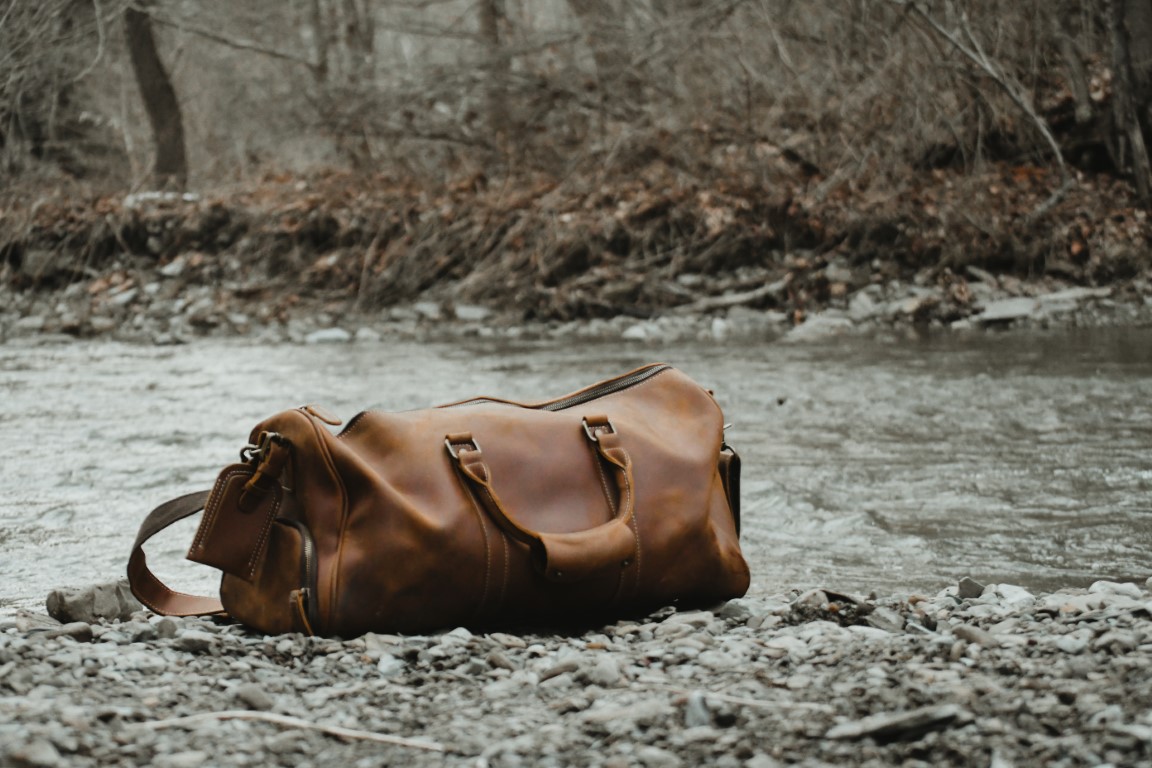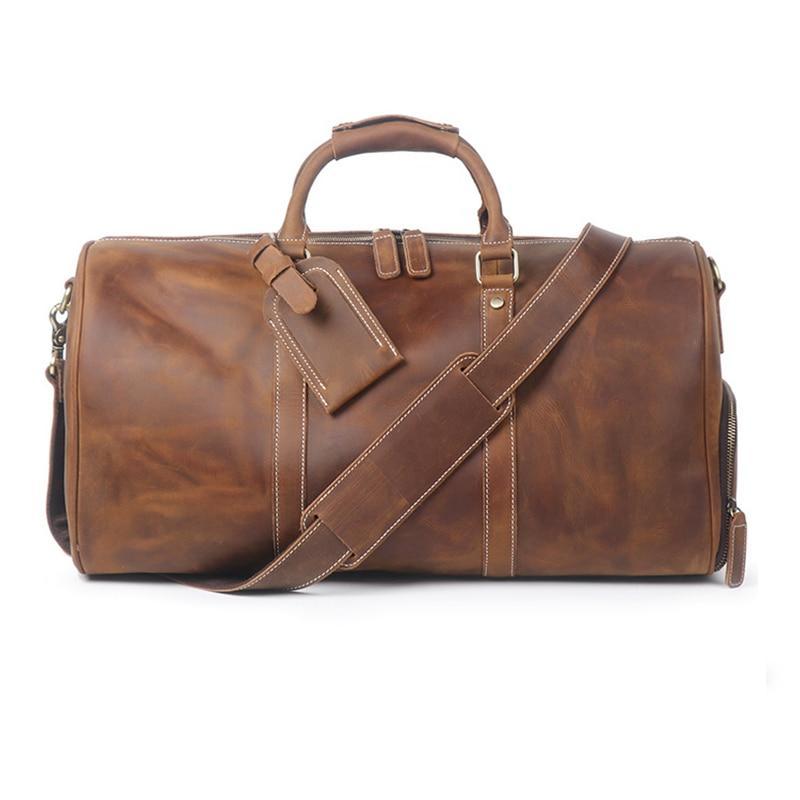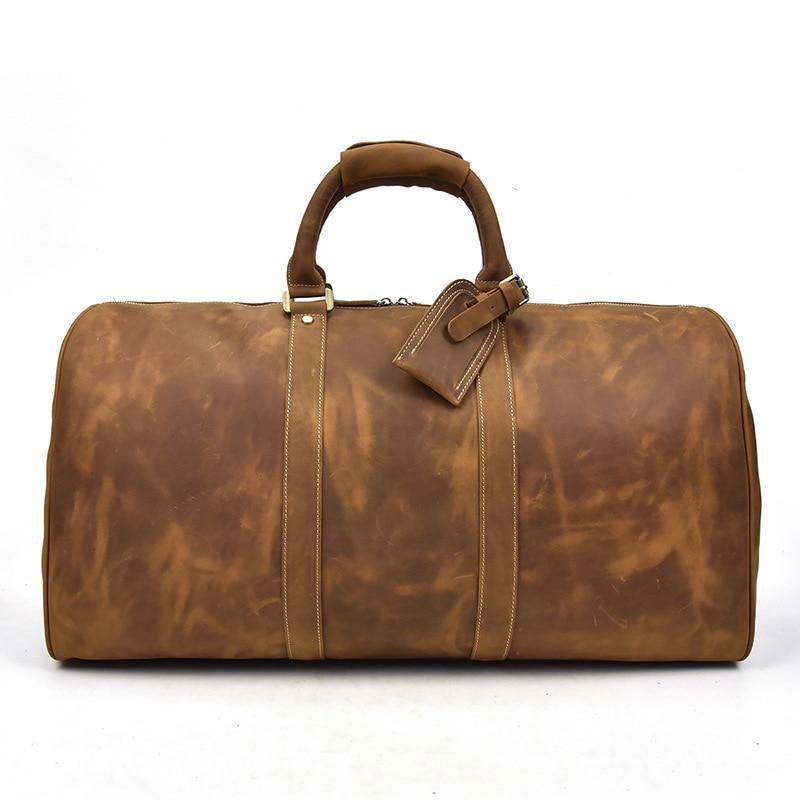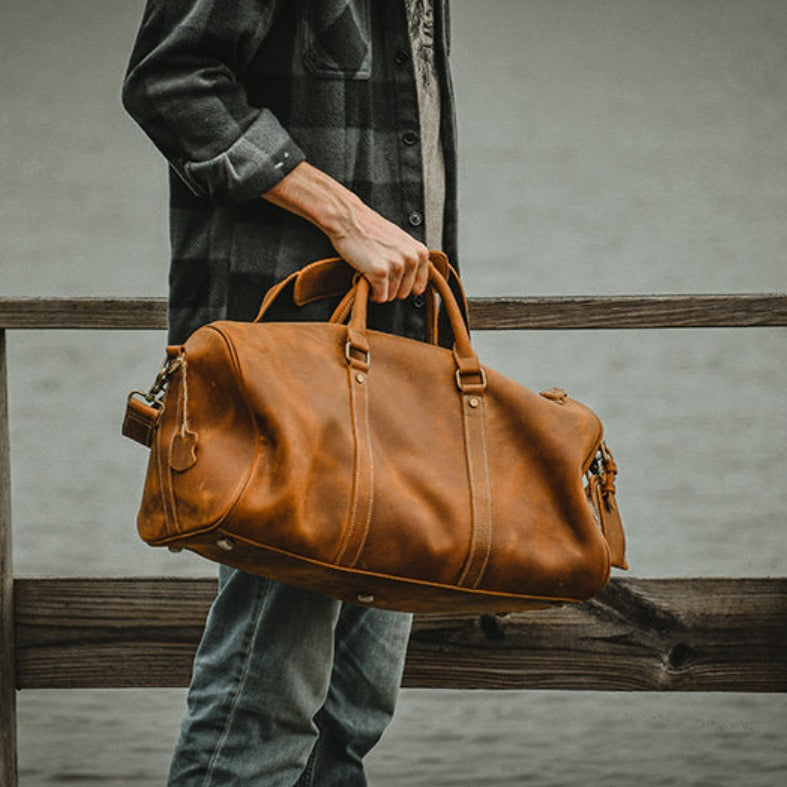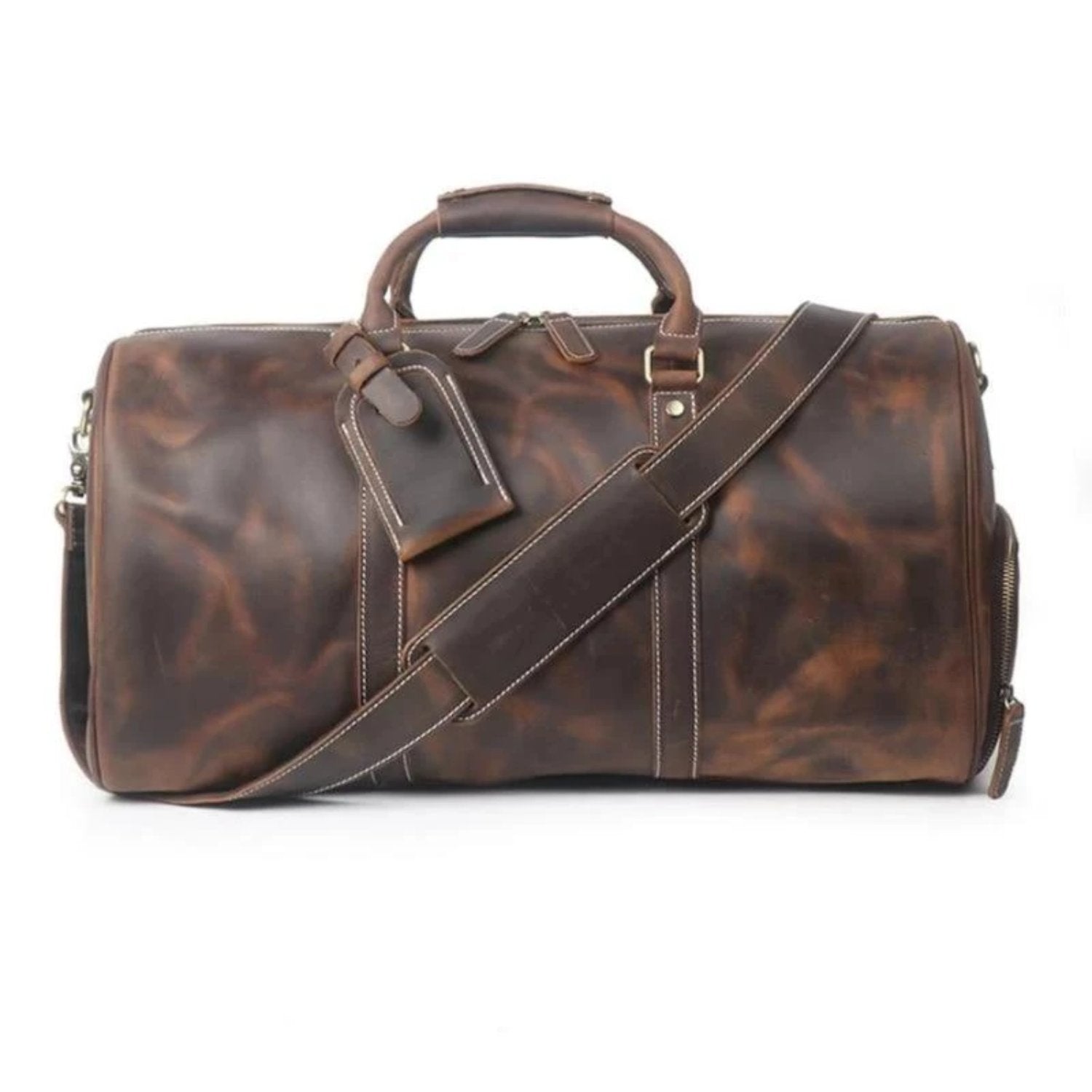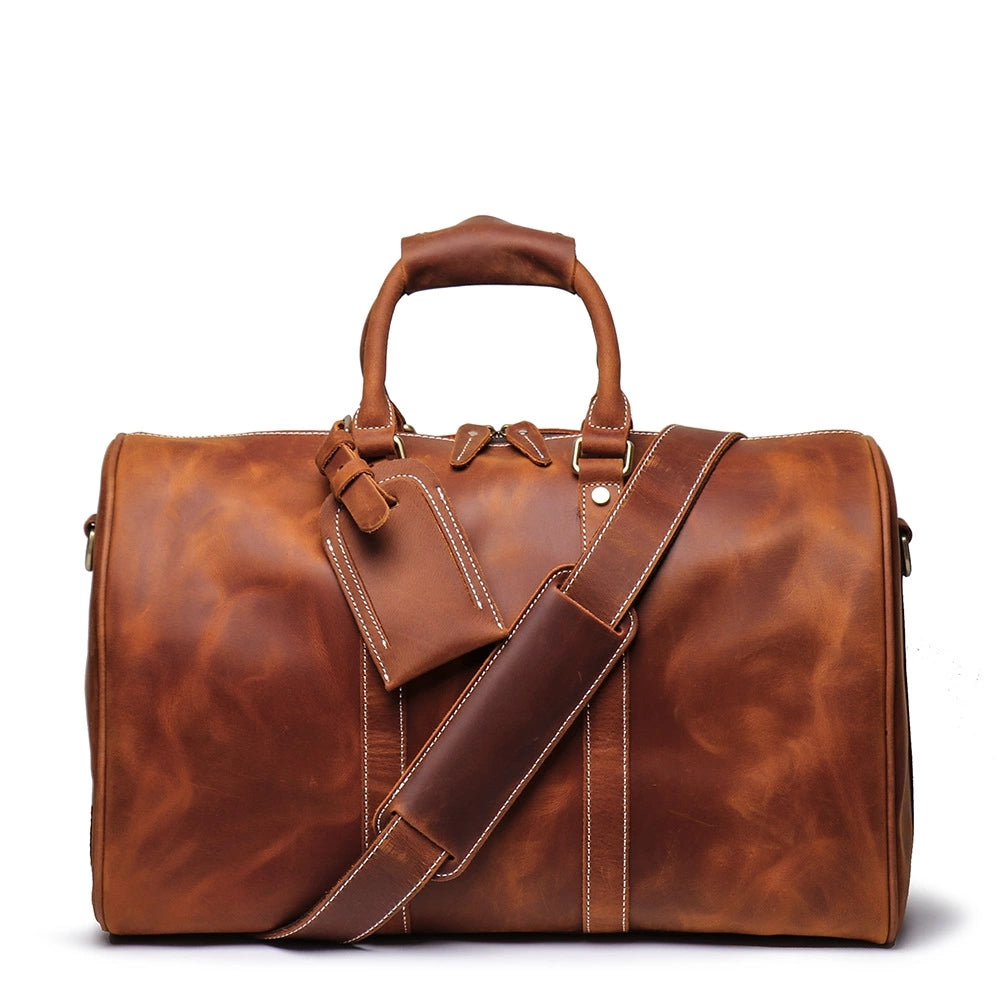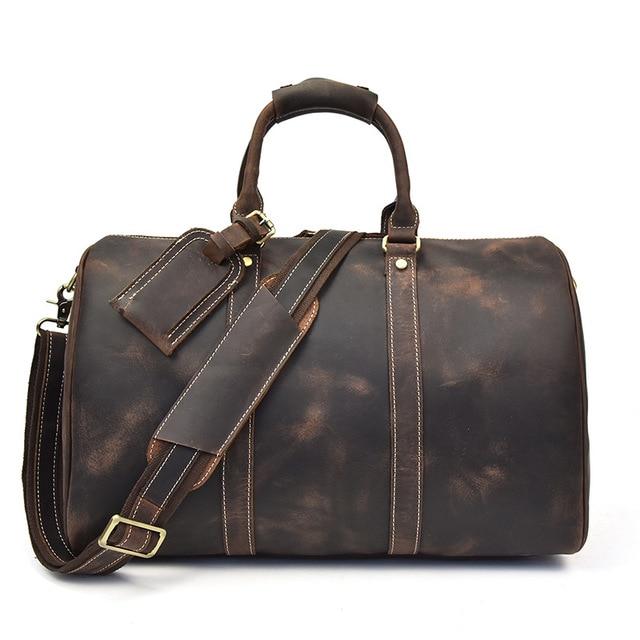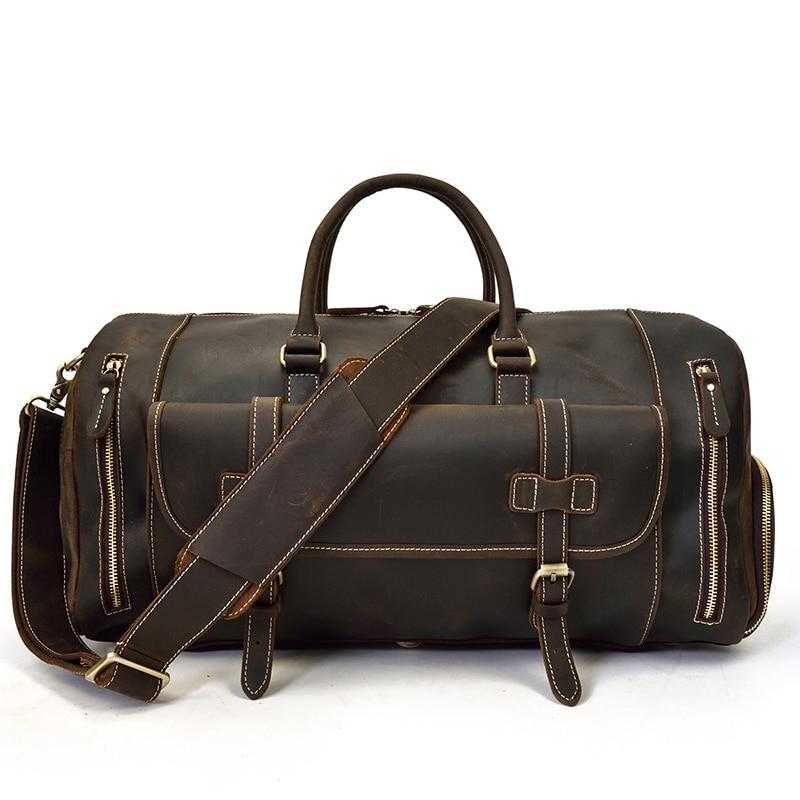Looking to keep your camera gear safe and secure? Look no further than durability and protection. Your gear's best friend, these two qualities ensure that your equipment can withstand any adventure. Whether you're a professional photographer or a hobbyist, it's essential to protect your investment. In this article, we'll explore the importance of durability in camera equipment, common threats to your gear, and tips for traveling with it. Get ready to capture those perfect shots without worrying about damage or loss.
Key Takeaways
-
Investing in high-quality protective gear like durable camera bags, cases, and lens filters is essential for preventing costly equipment damage and extending the lifespan of your camera equipment.
-
Environmental factors such as extreme weather, moisture, dust, and temperature fluctuations pose significant threats to camera gear, requiring proactive protection measures like rain covers and weatherproof storage.
-
Regular cleaning and maintenance using proper techniques and specialized products are crucial for optimal camera performance and preventing long-term damage from dust, dirt, and debris.
-
When traveling with camera equipment, implementing security measures such as inconspicuous bags, lockable cases, and keeping gear within sight can significantly reduce the risk of theft and damage.
-
The financial impact of equipment damage or loss can be substantial, making proactive protection through quality cases, insurance, and proper handling practices a wise investment for any photographer.
Our Expertise in Protective Gear and Durable Equipment
At Steel Horse Leather, we understand the critical importance of protecting valuable equipment through years of crafting premium leather goods designed to withstand the test of time. Our master artisans have dedicated their lives to perfecting the art of creating durable, protective leather bags using traditional methods passed down through generations. This deep expertise in material durability, protective design, and quality craftsmanship gives us unique insights into what truly makes equipment protection effective – whether it's camera gear, electronics, or any valuable equipment that needs reliable safeguarding.
Our obsessive attention to leather quality and protective functionality stems from a holistic approach to understanding how materials perform under stress, weather conditions, and daily use. We've thoroughly vetted countless leather providers and processing methods, giving us comprehensive knowledge about material properties, durability factors, and protective characteristics that directly translate to equipment safety principles. When we discuss gear protection strategies and durability considerations, we draw from real-world experience in creating products that serve as reliable companions during travels and challenging conditions, ensuring your valuable equipment receives the protection it deserves.
Importance of Protecting Camera Equipment
To ensure the longevity and optimal performance of your camera equipment, it is crucial that you prioritize the protection and maintenance of your gear. Whether you are a professional photographer or an avid enthusiast, taking care of your camera gear is essential to capturing stunning images and preserving the value of your investment.
One of the first things you should consider is protecting your memory cards. These small but powerful devices store all your precious photos and videos. To prevent data loss or corruption, it is recommended to invest in high-quality memory cards with sufficient storage capacity and fast write speeds.
For mirrorless cameras, which are known for their compactness and portability, it is important to have a good camera bag or case that provides adequate protection. Look for padded compartments and dividers to keep your camera and lenses safe from bumps and scratches.
When shooting in unpredictable weather conditions, such as rain or snow, using rain covers is a must. These protective covers shield your camera and lens from water damage, allowing you to continue shooting without any worries.
In addition, using protective filters can help safeguard your lens from scratches, dust, and other potential hazards. These filters also provide added benefits, such as reducing glare and enhancing color saturation.
Lastly, if you are into wildlife photography, having camouflage gear or lens covers can help you blend in seamlessly with your surroundings, allowing you to capture those elusive shots without disturbing the wildlife.
The Role of Durability in Ensuring Long-Lasting Gear
Ensuring the durability of your camera gear is crucial for long-lasting equipment that can withstand the demands of frequent use and various shooting conditions. When it comes to durability, one of the key factors to consider is the materials used in the construction of your gear. Opting for high-quality materials can provide an added layer of protection, increasing the longevity of your equipment.
High-quality materials, such as robust metals and impact-resistant plastics, are designed to withstand the rigors of everyday use. They can offer a higher level of protection against accidental drops, bumps, and even extreme weather conditions. By investing in gear made from these materials, you can have peace of mind knowing that your equipment is built to last.
Another way to ensure long-lasting gear is by using a protective cover. These covers are specifically designed to provide maximum protection for your camera and accessories. They offer a barrier against dust, moisture, and scratches, keeping your gear in pristine condition. Whether you're shooting in the rainforest or a sandy beach, a protective cover can shield your equipment from potential damage.
Understanding Camera Equipment Vulnerabilities
Protecting your camera equipment begins with understanding its vulnerabilities. When it comes to outdoor photography, your gear is exposed to various elements, including inclement weather. Heavy rain, for example, can pose a significant risk to your camera and lenses. Water damage can ruin sensitive internal components, causing malfunctions and rendering your equipment useless. Therefore, it is crucial to invest in high-quality camera lens protectors that provide a barrier against moisture. These protectors act as a shield, preventing water from seeping into your lenses and causing irreparable damage.
Another vulnerability that your camera equipment faces is the risk of scratches. Whether you are shooting in rugged terrains or simply handling your gear, scratches can occur and impact the quality of your images. To mitigate this risk, consider using protective cases or camera bags that offer cushioning and support. Additionally, applying screen protectors to your camera's LCD screen can help prevent scratches and maintain visibility.
Common Threats to Camera Gear

When it comes to protecting your camera gear, it is important to be aware of the common threats it can face. Physical damage is one of the main concerns, as accidental drops or bumps can cause significant harm. Environmental factors, such as extreme temperatures, moisture, and dust, can also pose a risk to your equipment. Additionally, theft and security concerns should not be overlooked, as camera gear is a valuable target for criminals. Being aware of these common threats will help you take the necessary precautions to keep your gear safe and in optimal condition.
Physical Damage
How can you effectively safeguard your camera gear from common physical threats? One of the key considerations is protecting your lens, especially if it has a larger lens size. Investing in a reliable lens barrel can provide essential protection against accidental bumps and knocks. Another useful accessory is a skylight filter, which not only helps to reduce UV light but also acts as a shield for your lens, preventing scratches and cracks. Additionally, consider investing in rain jackets specifically designed for cameras. These waterproof covers provide a protective barrier against rain and moisture, ensuring that your gear stays dry and functional even in challenging weather conditions. By being proactive and utilizing these protective measures, you can significantly reduce the risk of physical damage to your camera equipment.
Environmental Factors
To safeguard your camera gear from environmental factors, consider investing in protective cases and bags. Environmental factors such as bad weather can pose a significant threat to your precious photography gear. A high-quality tempered glass screen protector is essential to provide perfect protection for your camera's LCD screen. It not only prevents scratches but also safeguards against accidental impacts. Additionally, protective cases and bags with ample padding and shock-absorbing materials can shield your gear from drops, bumps, and excess moisture. Look for cases that are designed specifically for your camera model to ensure a snug fit and maximum protection. Furthermore, make sure the case or bag is made from durable and weather-resistant materials to withstand various outdoor conditions. By investing in the right protective gear, you can enjoy the freedom of capturing stunning images without worrying about the unpredictable elements.
Theft and Security Concerns
Protecting your camera gear from theft and security concerns is crucial for ensuring the longevity and safety of your equipment. Camera gear, such as digital cameras and photography equipment, can be expensive and valuable, making it an attractive target for thieves. To safeguard your precious gear, it is important to take proactive measures. One way to enhance security is by adding an extra layer of protection, such as a camera bag with reinforced locks. Additionally, consider using a camera strap with anti-theft features, like slash-proof material or a built-in alarm system. When storing your gear, choose secure locations and lock them up when not in use. It is also advisable to keep an eye on your equipment in public places and avoid leaving it unattended. By being vigilant and taking appropriate security measures, you can reduce the risk of theft and ensure the safety of your optical glass and photography equipment.
The Financial Impact of Equipment Damage or Loss
As a photographer, you know that your camera equipment is a valuable investment. However, it is important to consider the financial impact of equipment damage or loss. Proactive protection measures can help mitigate these risks and minimize the potential financial burden. By understanding the potential costs involved and taking steps to safeguard your gear, you can ensure that your investment is well-protected.
The Need for Proactive Protection
You need to be proactive in protecting your camera equipment to avoid the financial impact of damage or loss. Durability and protection are your gear's best friend. Camera equipment is valuable and delicate, making it susceptible to accidents, theft, and wear and tear. By taking proactive measures to protect your gear, you can ensure its longevity and avoid costly repairs or replacements. There are several ways to provide proactive protection for your camera equipment. Firstly, invest in a sturdy camera bag or case that provides cushioning and compartments to keep your gear safe and organized. Secondly, consider using protective filters for your lenses to prevent scratches and damage. Additionally, regularly cleaning and maintaining your equipment will help prolong its lifespan. Lastly, consider purchasing insurance or extended warranties to cover any unforeseen accidents or losses. Taking these proactive measures will not only safeguard your camera equipment but also provide peace of mind, knowing that you have taken steps to protect your investment.
Factors to Consider When Choosing a Camera Bag
When choosing a camera bag, there are several factors you should consider. First, think about the size and capacity of the bag. You want to make sure it can fit all your gear comfortably and securely. Second, consider the ergonomics and comfort of the bag. Look for features like padded straps and back support to ensure that carrying your equipment is as comfortable as possible. Finally, don't forget about weather resistance. A camera bag with weatherproof materials and waterproof zippers will help protect your gear from the elements.
Size and Capacity
Consider the number of lenses and accessories you typically carry to determine the ideal size and capacity of your camera bag. When choosing a camera bag, it is essential to ensure that it can accommodate all your gear comfortably. If you often carry multiple lenses, filters, and other accessories, a larger bag with multiple compartments would be suitable. Ensure that the bag has enough space to fit your camera body, lenses, filters, and any other must-have accessories you regularly use. If you frequently use cheap filters, consider choosing a bag that has dedicated pockets or compartments to keep them organized and easily accessible. Additionally, if you own max camera protectors or other bulky equipment, ensure that the bag has enough space to accommodate them without being too cramped. Opting for a bag with a compact size ensures freedom of movement while keeping your gear secure and protected.
Ergonomics and Comfort
To ensure a comfortable and ergonomic carrying experience, prioritize a camera bag that offers adjustable straps and a padded back panel. Ergonomics and comfort are crucial factors to consider when choosing a camera bag. Adjustable straps allow you to customize the fit and distribute the weight evenly across your body. This helps to prevent strain and fatigue, allowing you to carry your camera equipment for extended periods without discomfort. A padded back panel adds an extra layer of cushioning, reducing pressure on your back and providing support. Additionally, look for a bag with padded dividers to protect your gear from bumps and shocks while keeping it organized. An adjustable shoulder strap gives you the freedom to switch between carrying options, while external pockets provide easy access to smaller accessories. Prioritizing these features will ensure a comfortable and ergonomic carrying experience for your camera equipment.
Weather Resistance
Once you have prioritized ergonomics and comfort in choosing a camera bag, it is essential to also consider the weather resistance features that will protect your gear. Weather resistance is a crucial factor to take into account when deciding on a camera bag. You want a bag that is durable, provides excellent protection, and is able to withstand various weather conditions. Look for a bag that is waterproof or water-resistant to ensure that your gear stays dry even in rainy or snowy conditions. Additionally, a rugged bag made from high-quality materials will offer better protection against bumps, drops, and other accidents. By investing in a camera bag with strong weather resistance features, you can have peace of mind knowing that your valuable equipment is well-protected and ready to capture those perfect shots, no matter the weather.
Types of Camera Bags
Choosing the right camera bag depends on balancing storage, accessibility, and comfort. Here are the three main types of camera bags and their respective advantages and features.
| Bag Type | Primary Advantage / Balance | Key Features & Benefits | Ideal Scenario |
|---|---|---|---|
| Backpacks | Maximum storage space and even weight distribution. |
|
Long shoots, hikes, or when carrying a large amount of valuable gear. |
| Shoulder Bags | Quick and easy access to gear; high portability and accessibility. |
|
Photographers who need a compact, lightweight solution with rapid access to equipment. |
| Sling Bags | Balance between easy access and comfort; convenient and versatile. |
|
Photographers on the move who need quick access, comfort, and freedom of movement. |
Backpacks
Choose the right backpack for your camera gear to ensure maximum durability and protection. When it comes to backpacks, there are several options available that offer the perfect combination of functionality and security. One popular choice is the backpack with a retractable extension handle, which allows for easy transportation and maneuverability. These backpacks often come with card slots for convenient storage of memory cards, ensuring quick access and organization. Additionally, they feature a max camera lens protector to safeguard your lenses from any potential damage. With these backpacks, you can have peace of mind knowing that your camera gear is well-protected, allowing you the freedom to focus on capturing those perfect shots.
Shoulder Bags
Optimize the portability and accessibility of your camera gear with a shoulder bag, providing convenient storage and easy access to your equipment. Shoulder bags are a versatile option for photographers who desire freedom and flexibility while on the go. These bags are designed to withstand the demands of travel and outdoor adventures, offering durability and protection for your valuable camera equipment. With padded compartments and adjustable dividers, shoulder bags ensure that your gear stays safe and secure during transit. Some models even feature weather-resistant materials and reinforced stitching to provide extra protection against the elements. The adjustable shoulder straps allow for a comfortable fit, making it easy to carry your gear for long periods without strain. Shoulder bags are an excellent choice for photographers who want a compact and lightweight solution to carry their gear while still maintaining quick and easy access to their equipment.
Sling Bags
To maximize the portability and accessibility of your camera gear, consider utilizing a sling bag, a convenient and versatile option for photographers on the move. Sling bags are designed to be worn diagonally across your body, allowing for quick and easy access to your equipment while keeping your hands free. These bags are known for their durability and protection, with padded compartments and reinforced exteriors that shield your camera equipment from bumps, drops, and harsh weather conditions. Sling bags often feature adjustable dividers, enabling you to customize the interior layout to fit your specific gear requirements. Additionally, many sling bags incorporate multiple pockets and compartments, providing ample space for accessories such as lenses, batteries, memory cards, and filters. With their combination of durability, protection, and freedom of movement, sling bags truly are a photographer's best friend.
Types of Protective Cases and Covers
When it comes to protecting your camera equipment, there are several types of cases and covers to consider. Hard cases provide the most robust protection against impacts and rough handling, while soft cases and pouches offer a more lightweight and portable option. Lens cases and pouches are specifically designed to protect your lenses from scratches, dust, and other potential damage. Choosing the right type of protective case or cover depends on the specific needs of your camera gear and the level of protection you require.
Hard Cases
A hard case is a versatile and essential accessory for protecting your camera equipment while on the go. Hard cases are designed to provide durability and maximum protection for your gear. They are made from tough materials such as high-impact plastic or aluminum, ensuring that your camera equipment remains safe from any potential damage. These cases are specifically engineered to withstand rough handling, extreme weather conditions, and even accidental drops. With their foam padding, they offer excellent shock resistance, preventing any impact from affecting your sensitive camera equipment. Hard cases also have secure latches or locks to keep your gear securely in place during transportation. They come in various sizes and configurations, allowing you to choose the one that best suits your camera equipment's needs. Investing in a hard case is a wise decision as it ensures the long-term durability and protection of your valuable camera gear.
Soft Cases and Pouches
You frequently rely on soft cases and pouches as essential protective cases and covers for your camera equipment. Soft cases provide a lightweight and flexible solution for safeguarding your gear while on the go. These cases are designed to protect your valuable equipment from dust, scratches, and minor impacts. They are ideal for storing smaller items such as UV filters or housings for cameras. Soft pouches are particularly useful for protecting delicate pieces of glass, such as medium-telephoto zoom lenses, from damage. Many soft cases come with customizable dividers, allowing you to create compartments that fit your specific equipment. This ensures that each piece is snugly secured and protected within the case. Soft cases and pouches offer convenience and freedom, giving you peace of mind while you pursue your passion for photography.
Lens Cases and Pouches
As you transition from soft cases and pouches, it's important to explore the functionality of lens cases and pouches in providing additional protection for your camera equipment. Lens cases and pouches are specially designed to safeguard your lenses, ensuring their durability and protecting them from potential damage. These protective cases and covers are essential for photographers who want to keep their gear in pristine condition. Lens cases are typically made from durable materials such as nylon or neoprene, providing excellent shock absorption and resistance to impact. They feature padded interiors and adjustable dividers, allowing you to organize and securely store multiple lenses. Lens pouches, on the other hand, are compact and lightweight, perfect for carrying individual lenses. They often come with drawstring closures or zipper enclosures for easy access and added protection. Investing in high-quality lens cases and pouches will give you peace of mind knowing that your camera equipment is well-protected and ready for any photographic adventure.
Cleaning and Maintenance

To ensure the longevity and optimal performance of your camera equipment, it is essential to implement proper cleaning techniques and routine maintenance. Cleaning your gear regularly using recommended products and methods will help remove dust, dirt, and other contaminants that can affect image quality. Additionally, incorporating routine maintenance tasks, such as checking and tightening screws, lubricating moving parts, and calibrating autofocus, will help extend the lifespan of your equipment. Lastly, when not in use, storing your camera gear in a clean and dry environment, preferably in a protective case or bag, will further safeguard it from potential damage.
Proper Cleaning Techniques
Maintaining the durability and protection of your camera equipment is essential, and one key aspect of this is employing proper cleaning techniques. Whether you own high-end camera equipment or point-and-shoot cameras, regular cleaning is crucial to ensure optimal performance and longevity. When it comes to cleaning lenses, it is advisable to use a soft microfiber cloth to gently remove dust and smudges. Avoid using harsh chemicals or abrasive materials that can damage the lens coating. For filters, while cheaper options may be tempting, investing in high-quality filters made with h-hardness tempered glass ensures better protection and image quality. Additionally, consider using filters made from recycled materials to minimize environmental impact. By following these proper cleaning techniques, you can keep your camera equipment in top condition and enjoy capturing stunning images for years to come.
Routine Maintenance to Extend Equipment Life
To extend the life of your camera equipment, regularly perform routine maintenance tasks such as cleaning and maintenance. Routine maintenance is crucial in ensuring the durability and longevity of your gear. One important task is cleaning your equipment after each use to remove dust, dirt, and fingerprints. Use a soft microfiber cloth to gently wipe the surfaces and a blower brush to remove debris from hard-to-reach areas. Additionally, inspect your equipment for any signs of wear and tear, such as loose screws or damaged parts. These issues can be addressed through routine maintenance, which may involve tightening screws or replacing damaged components. It is also advisable to invest in extra protection for your gear, such as a release extension handle or a retractable handle, which can provide added stability and protection during use. By regularly performing routine maintenance, you can ensure that your camera equipment remains in optimal condition for years to come.
Storage Considerations for Camera Gear
When storing your camera gear, it is important to consider proper cleaning and maintenance techniques to ensure its longevity and protection. Neglecting to clean your equipment before storage can result in dust, dirt, and other debris accumulating on the lenses and sensors, potentially causing damage or affecting image quality. To avoid this, use a soft, lint-free cloth to gently wipe down the lenses and camera body. Additionally, if you notice any smudges or fingerprints on the lens, use a lens cleaning solution and a microfiber cloth to remove them. When it comes to storage, consider investing in dedicated camera bags or cases that provide cushioning and protection against impact. These bags are designed to hold your camera and lenses securely, minimizing the risk of damage from bumps or heavy loads. Finally, store your gear in a cool, dry place to prevent moisture damage. By following these simple cleaning and storage practices, you can ensure that your camera gear remains in optimal condition, protecting your investment worth thousands of dollars and producing high-quality, blue cast-free images for years to come.
Tips for Traveling with Camera Gear
When traveling with your camera gear, it is important to have a packing strategy in place to ensure the safety and organization of your equipment. Additionally, implementing security measures such as using a lockable camera bag or carrying your gear in a discreet and inconspicuous manner can help prevent theft. Lastly, knowing how to handle your camera gear in challenging environments, such as extreme temperatures or high humidity, is essential to maintain its performance and longevity.
Packing Strategies for Trips
Maximizing the protection of your camera gear while traveling starts with carefully planning your packing strategy. When it comes to durability and protection, your camera equipment is your gear's best friend. To ensure its safety during trips, consider using a sturdy and well-padded camera bag or case. Look for options that offer compartments and dividers to keep your gear organized and protected from bumps and scratches. Additionally, invest in quality camera lens and body caps to prevent dust and debris from entering your equipment. Utilize lens pouches or wraps to provide an extra layer of protection for your lenses. When packing, place heavier items at the bottom of the bag and use soft padding materials like microfiber cloths to cushion your gear. Finally, remember to secure all zippers and fastenings to prevent any accidental openings during transit. Following these packing strategies will give you peace of mind and allow you to focus on capturing memorable moments during your trips.
Security Measures to Prevent Theft
How can you ensure the safety of your camera gear while traveling to prevent theft? When it comes to protecting your camera equipment, implementing security measures is crucial. Start by investing in durable and reliable gear that can withstand the rigors of travel. Look for camera bags or cases that offer enhanced protection, such as reinforced padding, weather resistance, and lockable zippers. To deter potential thieves, consider using inconspicuous camera bags or backpacks that don't draw attention to your valuable equipment. Additionally, always keep your gear within sight or locked away when not in use. Utilize hotel safes or secure lockers to store your camera gear when you're out exploring. Finally, consider using discreet security devices like anti-theft camera straps or GPS trackers to further safeguard your equipment. By implementing these security measures, you can travel with peace of mind, knowing that your camera gear is protected from theft.
Handling Camera Gear in Challenging Environments
To ensure the durability and protection of your camera gear while traveling, it is essential to handle it carefully in challenging environments. Challenging environments can include extreme temperatures, high humidity, sandy or dusty conditions, and rugged terrains. These conditions can pose a threat to the functionality and longevity of your camera equipment. To protect your gear, consider investing in a durable camera bag or case that provides adequate padding and protection against impact. Additionally, always handle your camera with clean hands to avoid transferring dirt and oils onto the equipment. When shooting in challenging environments, use lens filters to protect the front element of your lens from scratches and debris. Finally, be mindful of any potential hazards in the environment and take necessary precautions to keep your gear safe. By implementing these tips, you can ensure the durability and longevity of your camera equipment, even in the most challenging environments.
Want the Best? Get the Best!: The MANN Bag

If you want the best camera bag for durability and protection, look no further than the MANN Bag. This handcrafted full grain leather camera bag is designed to withstand the toughest conditions and keep your gear safe and secure. The easy-access side-loading camera compartment allows you to quickly retrieve your camera when you need it, while the padded camera compartment with dividers provides excellent protection for your gear. The MANN Bag also features a dedicated padded sleeve for a 17' laptop, ensuring that all your equipment is kept in one convenient place. Made of high-quality crazy horse leather, this bag is not only tough and durable, but it also has a vintage and aged look that adds to its appeal.
Product Specs:
-
Handcrafted full grain leather camera bag
-
Easy-access side-loading camera compartment
-
Accommodates most compact cameras and SLR cameras with lenses
-
Padded camera compartment with dividers for gear protection
-
Dedicated padded sleeve for a 17' laptop
-
Made of high-quality crazy horse leather
-
Dimensions: 18.5 x 14 x 6 inches (47cm x 35cm x 15cm)
-
Weight: 3.85 lbs (1.75 kg)
-
Adjustable shoulder straps for comfortable carrying
-
Wrapped leather top handle for easy grab and go
Pros:
-
Durable and strong material
-
Provides excellent protection for camera gear
-
Convenient side-loading camera compartment
-
Dedicated padded sleeve for a laptop
-
Stylish vintage and aged look
Cons:
-
Slightly heavier than other camera bags
-
Limited color options
-
May require additional care and maintenance due to the leather material
The 5 of the Best Leather Bags in Today's Market
Looking for the best leather bags to protect and carry your camera equipment? Look no further. In today's market, there are five standout choices: The Dagny Weekender, The Endre Weekender, The Bjarke Weekender, The Colden Duffle Bag, and The Erlend Duffle Bag. These bags combine durability, style, and functionality to ensure your gear stays safe and secure.
The Dagny Weekender

The Dagny Weekender is one of the top five leather bags available in today's market, providing durability and protection for your camera equipment. Handcrafted with attention to detail by skilled artisans, this bag boasts unique and one-of-a-kind designs that exude high-quality craftsmanship. Made from premium full grain leather, it is remarkably durable and resistant to scratches, ensuring that your camera gear stays protected even during rugged adventures. With its spacious interior and multiple pockets, it offers ample room for organizing your equipment and other essentials. The ultra-soft leather handle and removable shoulder strap provide convenient options for carrying, ensuring comfort and flexibility while on the go. Additionally, the Dagny Weekender meets airline requirements, making it an ideal travel companion for weekend getaways.
Product Specs:
-
Dimensions: 19.7 x 9 x 10.24 inches
-
Weight: 3.9 lbs (1.8 kg)
-
Material: Full Grain Leather
-
Available colors: Brown, Dark Brown
Pros:
-
Crafted from high-quality full grain leather
-
Remarkably durable and resistant to scratches
-
Multiple interior pockets for organization
-
Ultra-soft leather handle for comfortable carrying
-
Versatile and suitable for various occasions
-
Meets airline requirements
-
Spacious enough for all your essentials
Cons:
-
Limited color options
-
Restocking fee may apply for returns
-
Relatively heavy compared to other options
The Endre Weekender

When it comes to the top leather bags in today's market, you'll find the Endre Weekender among the best options for durability and protection for your camera equipment. Made with crazy horse leather, this bag offers a unique retro and vintage look, while also being highly resistant to water and other liquids. The wax applied to the leather not only enhances its appearance but also acts as a protective barrier against moisture-related damages. With its durable construction and strong build, the Endre Weekender ensures that your camera gear stays safe and secure during travel. This bag is designed to develop a beautiful antique and vintage appearance over time, with scratches and changes in shades of color adding to its charm. Choose the Endre Weekender for a stylish and reliable option to carry your camera equipment.
Product Specs:
-
Material: Crazy horse leather
-
Size: Large (suitable for camera equipment)
-
Features: Water-resistant, durable construction, vintage appearance
-
Color: Varies (each bag is unique)
Pros:
-
Highly durable and protective for camera equipment
-
Unique retro and vintage look
-
Water-resistant and moisture-proof
-
Develops a beautiful antique appearance over time
Cons:
-
The vintage appearance may not appeal to everyone's taste
-
The size may be too large for those who prefer smaller bags for camera equipment.
The Bjarke Weekender

If you're in the market for one of the best leather bags available today, look no further than the Bjarke Weekender. Crafted with high-quality crazy horse leather, this handcrafted duffle bag offers both durability and style. Its subtle design features overlaid leather with stitched leather bars, giving it a unique and rugged appearance. The Bjarke Weekender is not just a bag, but a reliable companion for your travels, providing safe transportation for your valuable camera equipment and other belongings.
With its large main compartment and thoughtfully-designed pockets, this bag offers ample storage space for all your gear. The 14-inch laptop storage sleeve ensures that your laptop stays protected during transportation. The soft leather handles make carrying the bag comfortable, even when it's fully loaded.
Here are the product specifications, pros, and cons of the Bjarke Weekender:
Product Specifications:
-
Dimensions: 23.6 x 11.8 x 11.8 inches (60cm x 30cm x 30cm)
-
Weight: 5.3 lbs (2.4 kg)
-
Shoulder strap length: 57 inches (145cm)
-
Interior: 1 large main compartment, 1 zipped pocket, 3 open object pockets
Pros:
-
Made of high-quality crazy horse leather for durability and toughness
-
Thoughtfully-designed pockets and laptop storage sleeve for convenient organization
-
Subtle design and overlaid leather give it a unique and rugged appearance
-
Soft leather handles for comfortable carrying
-
Highly resistant to water and other liquids
Cons:
-
The bag may be heavy when fully loaded
-
The leather may develop scratches and marks over time, which some may consider a con
-
The bag's size may be too large for those looking for a smaller option
The Colden Duffle Bag

Looking for one of the best leather bags on the market today? Look no further than the Colden Duffle Bag. Crafted from high-quality crazy horse leather, this duffle bag offers durability and style for all your travel needs. The crazy horse leather has been treated with wax to give it a unique vintage look and enhance its resistance to water and other liquids. With its spacious interior and multiple compartments, the Colden Duffle Bag provides ample storage space for your camera equipment and other belongings. The leather ages beautifully over time, developing a rich patina that adds to its charm. Whether you're a professional photographer or a casual traveler, the Colden Duffle Bag is the perfect companion for your adventures.
Product Specs:
-
Material: Crazy horse leather
-
Dimensions: 20" x 10" x 10"
-
Weight: 3.5 lbs
-
Color: Brown
-
Features: Spacious interior, multiple compartments, adjustable shoulder strap, sturdy handles, antique brass hardware
Pros:
-
Durable and strong crazy horse leather construction
-
Water-resistant and highly resistant to scratches
-
Spacious interior and multiple compartments for easy organization
-
Adjustable shoulder strap and sturdy handles for comfortable carrying
-
Beautifully ages over time, developing a unique patina
Cons:
-
Slightly heavier compared to other duffle bags
-
Limited color options available
-
May require initial wax treatment for better water resistance
The Erlend Duffle Bag

The Erlend Duffle Bag is one of the top leather bags in today's market, providing durability and protection for your camera equipment. Crafted from genuine horse leather, this bag is designed to withstand the rigors of everyday use while keeping your gear safe and secure. With its spacious main compartment and capacious interior pockets, you'll have plenty of room to store your camera body, lenses, and other accessories. The comfortable leather handle and removable shoulder strap make transportation a breeze, giving you the freedom to carry your equipment wherever you go. Available in various sizes and styles, the Erlend Duffle Bag caters to different needs and preferences. Whether you're a professional photographer or an enthusiastic hobbyist, this bag is a reliable companion for your camera gear.
Product Specs:
-
Made from genuine horse leather
-
Spacious main compartment with capacious interior pockets
-
Comfortable leather handle and removable shoulder strap
-
Available in various sizes and styles
Pros:
-
Durable and protective for camera equipment
-
Spacious and versatile for storing gear and accessories
-
Comfortable and convenient for easy transportation
-
Stylish and attractive design
Cons:
-
Higher price range compared to other bags on the market
-
Limited color options available
-
May require occasional maintenance to preserve the leather's appearance and durability
Frequently Asked Questions
What Are Some Common Mistakes Photographers Make That Can Lead to Equipment Damage?
Common mistakes photographers make that can lead to equipment damage include mishandling professional grade camera equipment, neglecting regular maintenance, and not using proper storage solutions or protective cases. When you fail to handle your camera bodies and camera lens with care, dropping or banging them, you risk damaging delicate components and potentially causing shattered lenses. Neglecting maintenance such as cleaning lens filters and checking for loose screws can lead to long-term environmental damage. Additionally, not using hard cases, soft cases, or protective gear can expose your photography gear to dust, moisture, and other potential hazards. Mirrorless cameras and full frame camera bodies are particularly vulnerable without proper lens protectors and protective filters.
How Can I Protect My Camera Gear From Extreme Weather Conditions?
Protecting your camera equipment from extreme weather conditions and temperature extremes is crucial to ensure its longevity and performance. Don't underestimate the power of Mother Nature! To shield your precious equipment, consider investing in weatherproof camera bags with impact-resistant outer shell construction, rain covers, and lens hoods. Look for gear protection with proper water resistance and ipx standards for wet conditions. Additionally, always check the weather forecast before shooting, and avoid exposing your camera gear to rain, snow, or excessive heat whenever possible. Professional photography often requires sealed shooting bags with weatherproof design and impact resistance to handle challenging environments. Remember, a little precaution with the right protective cover can go a long way in safeguarding your gear and capturing those epic shots without worry.
Are There Any Specific Cleaning Products I Should Avoid When Cleaning Camera Equipment?
When cleaning camera equipment, it is important to avoid certain cleaning products that could potentially damage your gear. Stay away from harsh chemicals, such as bleach or ammonia-based cleaners, as they can erode the protective coatings on your camera bodies and camera lens surfaces, potentially damaging lens cases and memory cards. Instead, opt for specialized camera cleaning solutions or lens cleaning fluids that are specifically designed for delicate optical surfaces with hd clarity. These products are formulated to remove dirt and grime without causing any harm to your precious photography gear, lens protectors, or glass screen protector components. Consider using products with oleophobic coating properties and anti-fingerprint coating for easier maintenance of your camera lens protector and protective filters.
What Measures Can I Take to Prevent Theft of My Camera Gear?
To prevent theft of your camera equipment, there are several measures you can take. First, always keep your equipment secure and within sight using a reliable camera strap and camera bag with tsa-approved locks. Use a sturdy camera equipment bag or leather bags with lockable zippers and consider models made from genuine horse leather or crazy horse leather for durability. When in public, never leave your professional grade camera equipment unattended. If possible, invest in a camera lock, security cable, or alarm system to prevent stolen camera bags. Additionally, consider insuring your camera equipment transport and photography gear in case of theft, and look into camera equipment insurance with lifetime warranty or lifetime guarantee options. Store valuable items like memory cards and lens filters in interior compartments with custom foam inserts. Lastly, be cautious of sharing too much information about your gear online, as it could attract potential thieves interested in your camera bodies, mirrorless cameras, or other valuable equipment.
Can Using a Camera Strap Help Prevent Accidental Drops and Damage to My Equipment?
Using a camera strap is like having a superhero sidekick for your camera gear. It's your ultimate weapon against accidental drops, equipment damage, and broken cameras. This trusty companion keeps your camera bodies and camera lens securely attached to you, preventing any heart-stopping moments of watching your precious photography gear plummet to the ground. With a camera strap featuring proper drop rating specifications, you can confidently move around, knowing that your professional grade camera equipment is safe and sound. Combined with other protective gear like hard cases with custom foam interiors, padded divider interiors, and ultra-slim camera covers, you create multiple layers of gear protection. Consider pairing your camera strap with desiccant boxes for moisture control, abs plastic protective cases with stainless steel hinge pins, and impact-resistant plastics construction. Many photographers also add lens cases, protective cover solutions, and scratch resistant accessories with hd tempered glass protection. So strap up and let your camera equipment enjoy the comprehensive protection it deserves, complete with scratch-proof surface treatments and ingress protection rating for maximum security!
Conclusion
In conclusion, protecting and maintaining your camera equipment is crucial for its longevity and performance. By understanding the vulnerabilities and common threats to your gear, you can take necessary precautions to prevent damage or loss. Cleaning and maintenance are essential to ensure optimal functionality. When traveling, it is important to follow tips for safe transportation. And if you want the best in durability and protection, the MANN Bag is a top choice. Remember, investing in quality gear and taking proper care of it will save you from potential financial setbacks.




















